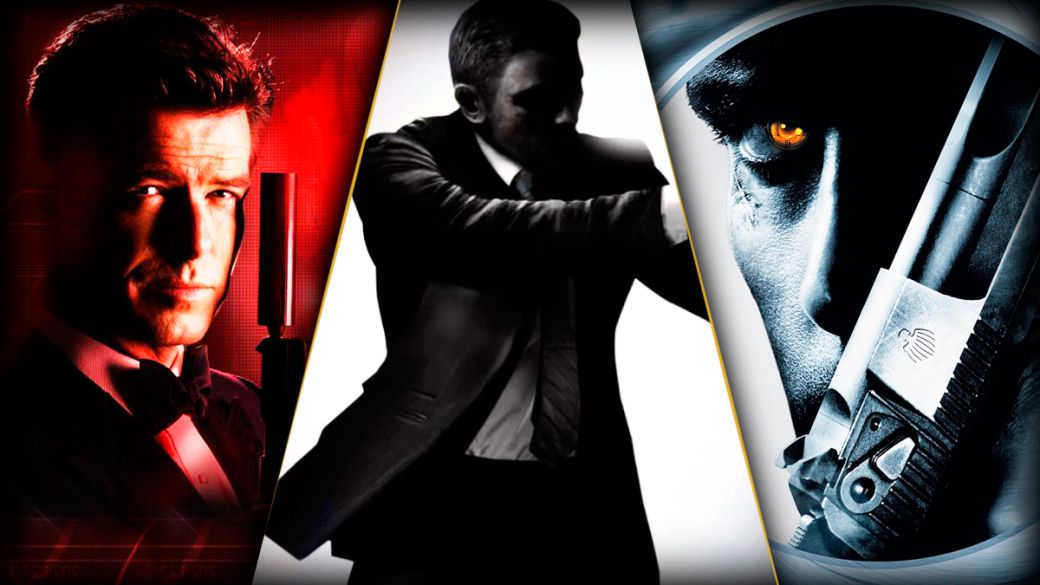
The most famous spy will return to video games at the hands of IO Interactive, so we take this opportunity to remember how his most popular conversion was conceived.
At the end of last year it became official: the Danish studio IO Interactive, responsible for the recently released Hitman 3, will be in charge of bringing James Bond back to video games. After the launch of the ill-fated 007 Legends in 2012, the saga has lain dormant for almost a decade, a period that will last before the new project sees the light of day. It is by far the biggest hiatus since it received its first adaptations in the eighties, one caused by the inability to get the best of it and the loss of interest from a public who saw how a franchise that had once surprised with several high-quality titles it fell into irrelevance imitating shooters that did the same, but better.
Of course, this is not exactly a new story, since at the beginning of the medium the popular British spy starred in graphic and text adventures, side-scrolling platforms or even medleys of minigames without leaving a mark in any of those genres. But that changed in the second half of the nineties, when the also British Rare reinvented the saga and the FPS with one of those works that can be described as “legendary” without falling into exaggerations. We are talking, of course, about GoldenEye, a Nintendo 64 classic that this week has returned to be the protagonist due to the leak of the canceled Xbox 360 remastering. On how this adaptation was conceived, why it became one of the most successful and also what still valid lessons he leaves for IO Interactive we will talk about today. For England.
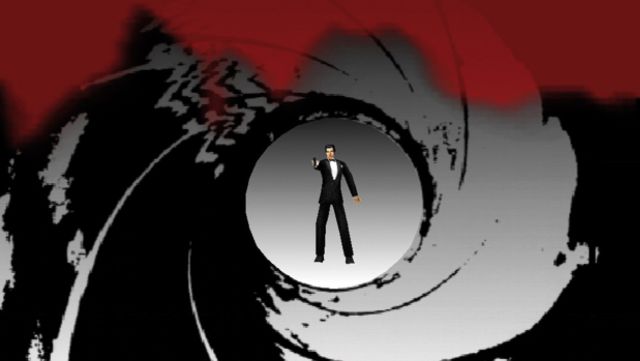
License to have fun
First, a little history. Come 1994, the last game (James Bond 007: The Duel for Mega Drive) had barely been on the market for half a year, but the film series was in its own hiatus after the ups and downs of dispatches were settled with several delays. In April, Timothy Dalton announced his departure from the franchise, making his second film (License to Kill, 1989) also his last. It didn’t take long for Pierce Brosnan to be announced as his replacement, and a pre-shoot event – dated early 1995 – was held in November with the rest of the cast. It did not lack people in the middle, but neither did a group of developers responsible for the game that was to dominate the imminent Christmas: Donkey Kong Country.
The collaboration between Rare and Nintendo was taking its first steps and those in Kyoto, aware of the potential of their new allies, thought of them to create a game based on the movie. As part of the invited entourage to the event were creatives such as Tim Stamper (co-founder of Rare and director of DKC) or Gregg Mayles (designer in the gorilla game and future director of Banjo-Kazooie), but they should not have been particularly impressed with the proposal because they considered rejecting it to focus on their own sagas. This reached the ears of Martin Hollis, one of the programmers of the first Killer Instinct, who plucked up his courage and asked Stamper to take over the project. To his surprise, he received the green light, and soon found himself forming a new team that should create the game from the script and visits to the set that allowed the acquisition of the license.
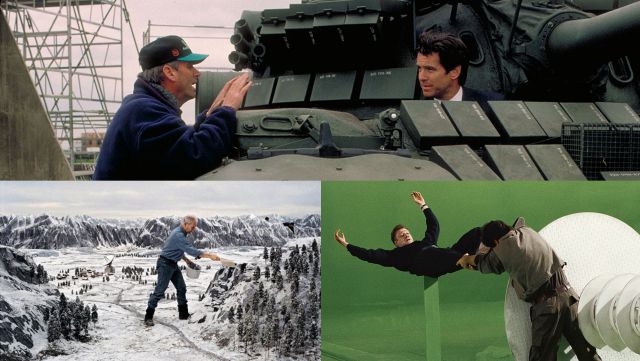
Although the first impulse was to make a 2D action platformer for the SNES taking advantage of the experience with the Silicon Graphics stations that brought the Country and Killer Instinct trilogy to life, Hollis had already been experimenting with the provisional specifications of the still called Ultra 64 and suggested starting there. His idea, moreover, was not to follow in the wake of Donkey Kong or other side-scrolling adaptations such as Batman Returns, Super Star Wars or its predecessor, James Bond 007: The Duel, but to be inspired by Virtua Cop, a popular Sega rail shooter. . Progress through the levels, therefore, would be pre-programmed, allowing the studio to control the rhythm of the action while the player fired at enemies or interacted with other elements of the scene using a cursor on the screen.
On paper it sounded like an appropriate idea to get a “movie” game, but luckily it was soon scrapped because Hollis’s plans were more ambitious and involved the use of gadgets, the creation of alternative routes and the possibility of circumventing the game. direct conflict. After all, while the Bond movies didn’t skimp on action, the spy wasn’t characterized as a trigger-happy soldier either, so the game director wanted to introduce varied objectives like recovering documents, sabotaging facilities, or rescuing hostages, as well as establishing an alert system that increases the number of enemies if the player fired too much or allowed rivals to run towards alarms scattered throughout the levels.
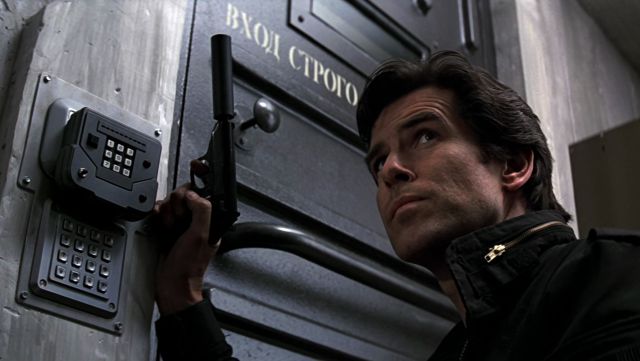
Narrative structure and playable structure
Speaking of levels, another need Hollis identified right away was to expand the development beyond the events of the film. Although the most important distinction between cinema and video games resides in the interactivity of the seconds, another key difference tends to be found in the structure, much more conditioned by the narrative focus of the cinematographic format. Video games, of course, also tell stories, and sometimes even put a greater effort into that facet than the playable one – more often now than in the days of GoldenEye – but their nature usually calls for the implementation of multiple chained substructures, small conflicts, tasks, objectives that are introduced and resolved before moving on to the next level or section.
These substructures do not always contribute to the overall narrative, those classic three acts that keep the story clear and orderly, but serve purposes as or more important as displaying mechanics, types of design or variations in rhythm that would not be possible in a faithful recreation. . Rare understood this and made changes as dramatic as they were logical. One of the most significant was the double incursion into Sévernaya, a location that Bond does not even step on in the film, but which in the game offers both open-field exploration and more intense action in the tunnels of the underground bunker. In fact, one of Hollis’s first suggestions was to open the game there on a previous mission to establish the discovery of the GoldenEye satellite and also the dynamic between Bond and Trevelyan before their fateful encounter at the Archangel Chemical Plant (Facility).
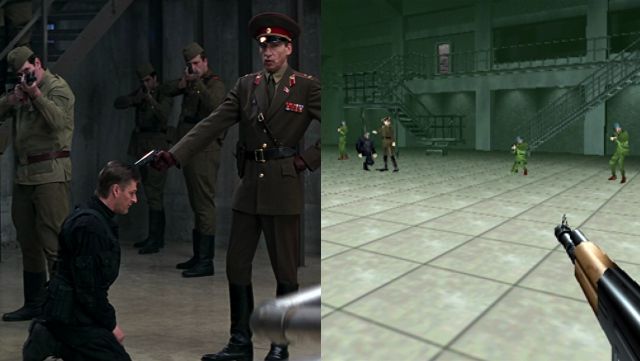
The idea ended up being discarded and the final game starts with the same mission as in the film that precedes the opening credits (the jump from the dam, the aforementioned chemical plant and the subsequent flight by plane), but then opens an intermediate parenthesis in The one in which Bond travels alone to Sévernaya – where he meets Boris Grishenko, a character he does not meet in the film until the third act – and to Kazakhstan – an unpublished location where General Ouromov reappears – before realigning himself again with the film’s chronology in Monte Carlo, turning the robbery of the helicopter during a demonstration into a high-voltage rescue with hostages – there the team intended to introduce Xenia Onatopp, although her appearance was not implemented despite being cited in the dossier that explains the objectives of the mission-.
And is that one of the main successes of GoldenEye was its willingness to not only get off the rails that would tie up an imitation of Virtua Cop, but also those that would impose making a copy of the film. Members of Rare came to the shoot several times to photograph sets, costumes, weapons and, of course, actors, but then they used those pieces to build a new puzzle. Thus, the second visit to Sévernaya brought forward the meeting with Natalya to propose an escort mission on a level with which we were familiar, and the meeting with Valentin Zukovsky moved from his bar to the same park in St. Petersburg in which the Trevelyan’s true identity, spinning and transforming on a broad level what were different scenes in the film. These were changes largely derived from limitations in technology and inexperience of the developers – for most it was their first project – but also from the confidence necessary to let the work evolve organically to better fit in another medium.
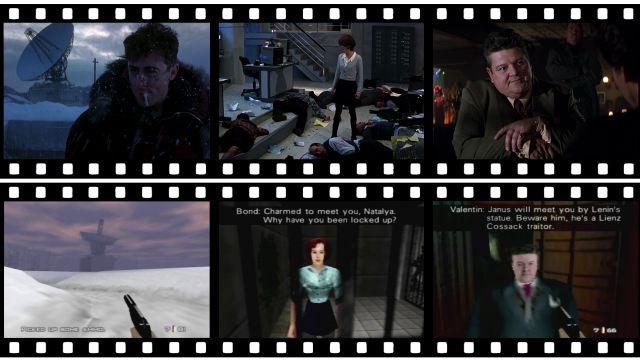
The one genre revolution
Some circumstances outside the team were also decisive in making GoldenEye the classic we know today. The initial plan was to launch Nintendo 64 at the end of 1995, at which time the film would be released and it would be ideal to have the exclusive adaptation for it as one of its great claims. But Nintendo was unable to meet the hardware deadline and the delay meant extra time for Hollis’s group. At that time, moreover, the project had not only established itself as a DOOM-style free-motion FPS -although it kept ideas from Virtua Cop such as reloads, the use of a peephole with a zoom for extra precision or the distinction between impacts in each part of the body of the enemies – but also found in Super Mario 64 a new reference.
Nintendo EAD was carrying out its own revolution in parallel and, although it belonged to a different genre, it gave the Rare team the idea of incorporating a higher number of objectives at each level. In GoldenEye, however, the player would not enter to complete one at a time, but would have to complete several in each pass -dependent on the difficulty, with up to five in the highest- to give the mission passed and be able to access The next. This opened the doors to an elaborate design even further, as the levels had to house rooms off the main route with magnetic cards, machinery and other objects in which to use gadgets such as trackers, replica makers or cameras. Once the formula was found, more interesting than simply looking for colored keys like in DOOM, they also took inspiration from other Bond movies and modeled gadgets not present in GoldenEye, for which they then reverse-engineered uses.
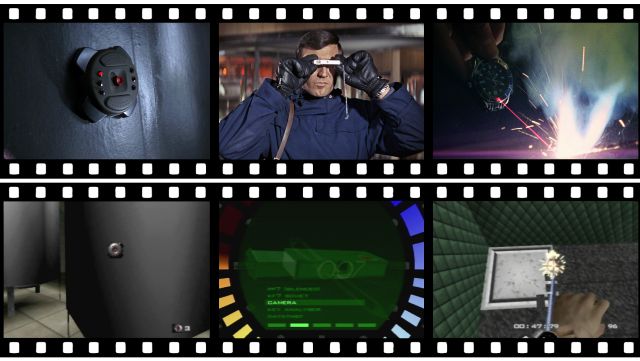
Of course, these peripherals did not downplay the shootings either, the weapons arsenal was just as wide and varied, showing that the label “DOOM clone” fell short: pistols with and without silencer, automatic rifles, sniper rifles, shotguns, revolvers , throwing knives, grenades, mines, rocket launchers … Even within a category, the differences in damage and accuracy were appreciable, and many weapons could be wielded with two hands. On the other hand, the studio also made sure that they were all easy and satisfying to use, implementing more automated assisted targeting than Turok’s and capturing tons of animations so that enemies would react realistically to each type of impact, which It increased the immersion, but it also added a tactical factor by assigning different values to each part of the body (and thus establishing the importance of the “headshot”, the headshot, as it means instant death).
The environments were not far behind either, with destructible crystals, walls that transformed each bullet into a hole and a multitude of explosive elements such as boxes or terminals that could sow chaos by surprise. Beyond the recognizable locations or the elaborate mission design, GoldenEye offered minute-by-minute fun and unpredictable gameplay, which encouraged replayability and allowed it to stand out from the big names in PC despite hardware limitations. and command. Even with Nintendo 64 already out and about and the next Bond movie (Tomorrow Never Dies) on the horizon, Rare managers allowed Hollis and his team to continue working and polishing the game, allowing them to include a couple of missions. extra beyond the credits (inspired by other movies), tons of unlockable cheats by beating records (infinite ammo, giant heads, slow motion, etc.) and the jewel in the crown: multiplayer.
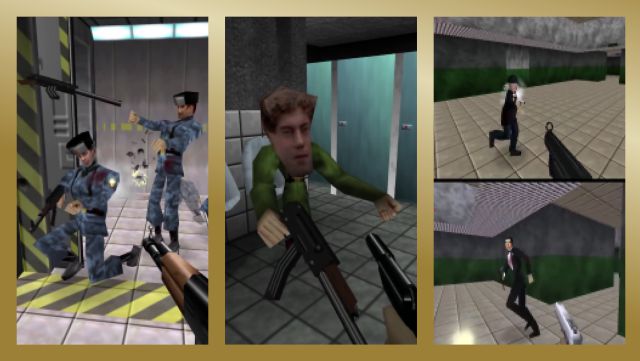
In the shadow of GoldenEye
Although it was not implemented until the last couple of months of development, already in the middle of 1997, multiplayer had been around the heads of designers long before. Hollis himself had dropped it among his initial suggestions, but discovering that the Nintendo 64 would come with four serial controller ports reinvigorated interest in the idea. Although its addition was late, and hidden from the top positions of Nintendo and Rare – a small group programmed it to propose it with a working prototype – split screen multiplayer quickly took shape thanks to the solid foundation established for the campaign and allowed them to introduce a large volume of scenarios, characters, modes and rules to customize the games: all against all, by teams, capture the flag, weapons that killed with one shot, battles with rocket launchers or mines, compatibility with cheats, etc. .
The mode was an immediate success within the team, who played in their free hours, and also convinced the managers, although its real impact would be seen in the long term. Released nearly two years after the film, GoldenEye was met with rave reviews and good, but not spectacular, sales. However, they stayed like that month after month, after another, after another, until they began to be counted by years and reached a whopping eight million copies (more than DOOM, Quake or the first Halo). A feat possible thanks to word of mouth and its multiplayer, which became an emblem of the console comparable to the analog movement of Super Mario 64 or the adventurous scale of Ocarina of Time. Rare had legitimized controller FPS and created a new behemoth from a borrowed license, one that soon after ended up in the hands of Electronic Arts because the British preferred to continue evolving the formula into another homegrown: Perfect Dark.
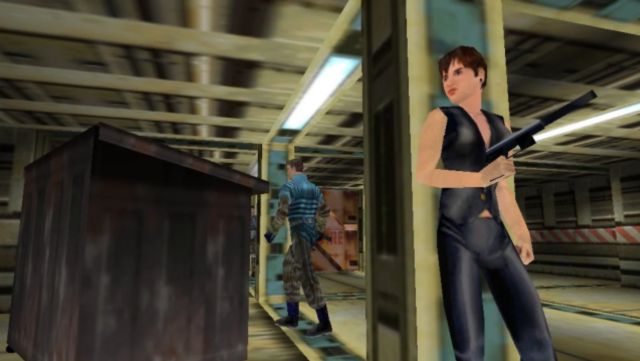
Bond therefore had to find a new house. And it was not an easy search, although he found occasional comfort with another British company: Eurocom. Black Ops Entertainment first adapted Tomorrow Never Dies to PlayStation as a Third Person Shooter with a few levels of driving interspersed, but it lacked multiplayer and action as refined as GoldenEye. Upon the arrival of Brosnan’s third film, The World Is Not Enough, EA repeated Black Ops on PlayStation, but let Eurocom try their luck on Nintendo 64. The result was The World Is Not Enough, the more faithful successor that recovered the first person, the variety of objectives, an even greater number of gadgets and multiplayer with bots as in Perfect Dark, also improving the staging thanks to dubbed sequences. It still failed to achieve comparable success to Rare, in part because it was overshadowed by Perfect Dark himself, but it made it clear that Eurocom was a solid alternative to the series.
The jump to PS2, GC and Xbox inaugurated a period marked by games not based on specific films and developed by several EA studios – except in the case of Nightfire, which was again run by Eurocom. In its quest to engage fans old and new alike, the company tried everything from revisions to the The World Is Not Enough formula in Nightfire to the preceding Agent in Crossfire – both also featuring vehicle chases and gimmicky set pieces. – until the return of the third person in Everything or Nothing and From Russia with Love, who tried with cover systems and more hand-to-hand combat. Even the name GoldenEye returned to the fore in Rogue Agent, ironically the worst received of all due to its little plot or playable relationship with the Nintendo 64 title. It is clear that this batch raised the technical bar and benefited from the already standardized analog double, but the lack of a clear vision, the annual rhythm and the irruption of Halo left Bond in the role of second son.

Trying to recapture the magic
After the lukewarm reception of From Russia With Love, an adaptation that recovered Sean Connery himself to give voice to the character decades after popularizing him in the cinema, Electronic Arts ended the contract with Metro Goldwyn Mayer and left a free pass for Activision to pick up the baton coinciding with the incorporation of Daniel Craig to the role. The timing of this relay made it difficult to make a direct adaptation of his first film, Casino Royale, on time, so Treyarch (studio responsible for Call of Duty 3) combined some of its events with those of the second part to make Quantum of Solace a plot hybrid. This dual nature was also applied to the playable component, where he combined first-person perspective with change to third during the use of coverages, all within the framework of a shooter with self-regeneration of life, Quick Time Events and action more unrestrained than the EA games. Something that, as expected, did not convince many fans.
For them, simultaneously Rare – now in the hands of Microsoft – decided to prepare for Xbox 360 a complete remastering of the original GoldenEye with new textures and models, online multiplayer and optimization according to the new generation (HD resolution and 60 fps). While it was a relatively minor project, geared toward the console’s digital store (Xbox Live Arcade), it generated a great level of excitement that was abruptly smashed when news of its cancellation emerged. Some disagreements between the agents involved in the rights (Microsoft, Nintendo, Activision, Danjaq) paralyzed the launch of a practically finished product in 2008, something that was repeated in 2015 when Rare tried to get it back for its anniversary compilation, Rare Replay. Perhaps more surprising is the fact that just this week, after years of silence, that version was leaked and uploaded to the internet. So, even if it is in an unofficial way, users can finally settle that pending account.
And, despite technological advances and improved staging, the public never forgot the brilliant simplicity of the Nintendo 64 game, so, after Quantum of Solace, Activision launched two games in parallel. The first, called Blood Stone and developed by Bizarre Creations (Project Gotham Racing saga), was limited to the third person and was an unreleased installment like most of EA in the previous generation. For the second project, the chosen studio was Eurocom, who was tasked with the not inconsiderable task of reimagining GoldenEye in a modern context, still in the first person, but with Daniel Graig in the place of Pierce Brosnan, a completely rewritten script and redesigned levels for conform to a scale, gameplay and pace more characteristic of Call of Duty.
The version of GoldenEye for Wii was better received than Blood Stone or Quantum of Solace thanks to the implementation of the Wiimote, the least competition of the genre on the console and to the cast for its campaign of effective moments of stealth, use of gadgets and a certain variety of chores. It was, in its way, another kind of hybrid, one that offered a longer and more intricate development than on Nintendo 64, but also more linear, with map and GPS targets, numerous checkpoints at each level, and interruptions to deploy more. scripted events than in GoldenEye or its spiritual successors (Perfect Dark and the defunct TimeSplitters saga). Although the subsequent relaunch on PS3 and Xbox 360 was more evidence that his style of play was fused among the other strong shooters of the generation, the title worked enough and it earned another opportunity for Eurocom – an opportunity that Bizarre Creations did not have, closed a few months after taking out Blood Stone.
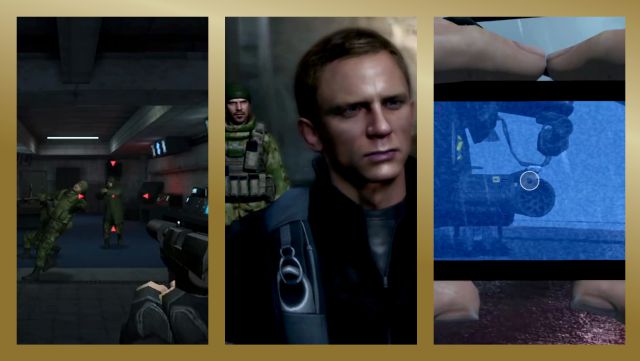
From agent 007 to agent 47
And this takes us back to the beginning, to the launch of a 007 Legends that also inserted Daniel Craig in film adaptations in the past starring other actors, and to the cold reception of an audience that did not see in him a game at the height of the legacy of the franchise, nor a substitute for multiplayer of other more consolidated modern sagas. Although not bad on their own, delivery after delivery it was clear that nobody hit the key. With the idea that GoldenEye had not been a mass success for being the biggest, fastest or most intense FPS, but for using creativity to distinguish itself from the DOOM and Quake of its time. 007 Legends, by contrast, cemented the lack of personality, failed, and resulted in both the closure of Eurocom and the end of Activision’s Bond era.
And this is exactly where IO Interactive comes into play. Creators of Hitman and its protagonist Agent 47, the Copenhagen studio also had a minor identity crisis in 2012. Released just a month after 007 Legends, Hitman: Absolution was a quality game, but too inspired by other shooters in the world. third person from previous years, which came at the cost of reducing the freedom and flexibility executing murders that made the series so appealing in the first place. Luckily, the team identified the problem and went back to the board to create a new installment that recovers the essence of Blood Money, its particular GoldenEye. And if you have followed the recent news, or have directly played any of the last three installments, surely you already know that they succeeded.
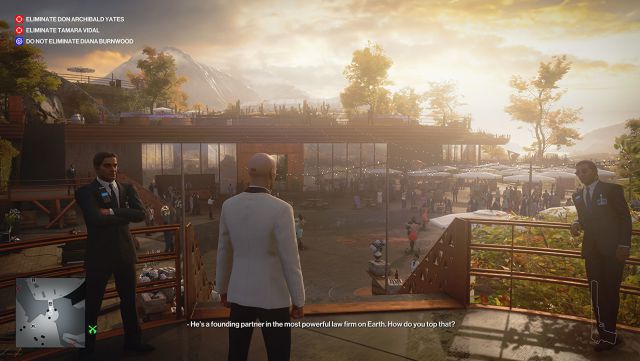
Although the episodic format for which they opted was highly questioned at the beginning and resulted in somewhat slow sales and the abandonment of Square Enix (who had acquired it years before as part of Eidos), both the first Hitman of this new era and his two sequels have raised the bar for the saga by focusing on its strengths. With large and complex maps, full of characters with their own routines and dozens of variables to play with, each mission was a game in itself, a microscosm in which we entered to explore, study the environment, draw optimal plans, improvise if something goes wrong and also come back to try new methods or become an increasingly efficient killer. It is the «sandbox» concept in one of its purest forms, not applied to the simple extension of space, but to the infinity of toys that we have to mold sand in it.
With that on the table, it’s easy to see what IO Interactive can bring to James Bond. While action plays a key role in Rare’s game, the best attempts from other studios or many of the films – IO has advanced that it will not be based on a specific one – donning a special agent’s tux should also involve challenges logical and logistical in nature. Hitman’s current mold is surely a slower paced one than 007 requires, but both franchises share, at least in their ideal form, the satisfaction of defeating the enemy using the head and not just a gun, or even strict directions from the developer. If this is transferred to solvable missions without shooting, solvable objectives with more than one gadget or simulations aimed at creating organic experiences that change each time we load the level, time will tell. The same with a hypothetical multiplayer that has to make its way into an infinitely more saturated panorama than that of 1997. Many questions, no answers, but, at least for now, the studio’s choice seems hardly better.


